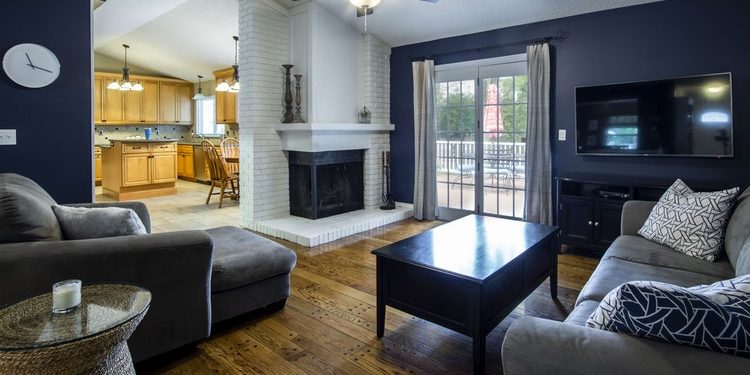In most insurance policies, personal property coverage, called Coverage C, protects your belongings from loss and damage. It can be added to your home insurance or standard renters policy.
This coverage typically pays to replace your belongings if they’re stolen or damaged by a covered loss. Depending on your policy, it may pay actual cash value or total replacement cost.
Coverage for Valuables
You might not know that your homeowners or renters insurance policy may only partially protect some of your prized possessions, including jewelry. Many insurers limit their protection for diamond jewelry, watches, and furs.
But there are ways to ensure your valuables get the coverage they need or through covering your personal property. Start by making a home inventory, a comprehensive list of every valuable item in your house. This can help you determine what kind of personal property coverage you need and give you peace of mind if you ever have to file a claim for damages to your belongings.
Likewise, you can ask your agent about a scheduled personal property endorsement, which can increase the amount of protection you receive for your most expensive belongings. This add-on will raise your premium but can result in a higher payout when you file a claim for the loss of these items.
Finally, you can buy replacement cost value, which replaces your belongings with the amount they were worth before the loss. This type of coverage doesn’t consider depreciation, so you could have less money if the item you lost were only worth $1,000 three years ago.
If you’re planning on buying new items, such as a computer or TV, consider purchasing a buyer’s protection plan, which provides additional protection for these valuables at the time of purchase. Most of these plans charge a monthly or annual fee, but they can be cheaper than purchasing an add-on policy.
Coverage for Perils
Personal property coverage, also known as Coverage C within your home insurance policy, is the protection that pays out if your belongings are damaged, destroyed, or stolen by a covered peril. This is legal protection in most policies and a critical part of protecting what you own and use most frequently.
Typically, you need to have enough personal property coverage to replace your belongings at their actual cash value or replacement cost, depending on how your policy works. To help make sure you have enough coverage, it’s a good idea to create an inventory of your belongings and keep records of their current value.
You’ll also need to consider other factors when deciding how much personal property coverage you need. For example, you might need additional coverage if you have expensive jewelry.
The other consideration is the type of peril that you want your personal property to be protected against. Often, you’ll have the choice between an open hazard or named peril policy.
The latter typically provides a broader scope of coverage for any loss or damage. However, it can be more costly than an open peril policy. Named perils also generally exclude certain losses, such as theft and vandalism. In addition, named perils often have a limit on the amount they will pay out for a claim.
Coverage for Additional Living Expenses
Your insurance policy should include coverage for any additional living expenses you incur while your home is being repaired or rebuilt after a covered loss. This can cover things like hotel bills and good restaurant meals. It would help to keep receipts for any extra costs to ensure your claim is paid out accurately.
This coverage usually amounts to about 20% of your dwelling limit. It’s included in most homeowners, condominium owners, and renter’s policies.
Personal property coverage is essential to your home insurance since it covers furniture, clothes, and sports equipment. It also protects your belongings when traveling or away from your home — even if stored off-premises.
The type of personal property coverage you purchase will depend on your individual needs and the value of your items. It’s usually a good idea to conduct a home inventory to determine the value of all your possessions and then shop for the best rate.
Replacement cost coverage is generally a better option, as it will reimburse you for the actual cash value of your belongings. That means if you bought a TV three years ago for $1,000, and it’s destroyed in a fire, the insurance company would pay only $1,000.
Some homeowners, condo owners, and renters’ policies offer an optional endorsement to give you additional protections. This can include higher limits for expensive items like jewelry and silverware.
Coverage for Damage to Other People’s Property
Home, condo, and renters’ policies typically include personal property coverage. It reimburses you for replacing your belongings if they are damaged or stolen.
It covers furniture, clothing, appliances, electronics, and other items you own and keeps at home. It also includes items temporarily left at your house by friends and family members.
When deciding how much personal property coverage you need, consider the value of your possessions. This can be determined by listing everything you own and how much it costs or what it’s worth.
You can then round up the total to know how much coverage you need. For instance, a college student with only a laptop, TV, and a few clothes might need less coverage than a married couple with excellent electronics and furniture.
Another option is to purchase replacement cost coverage, which will pay you the amount it would cost to replace your possessions with new items similar in size and design. This is a good option if you have expensive electronics or other high-value items that quickly depreciate.
When you file a claim, your insurance company will evaluate the value of your belongings and decide on how much to pay you. This can be done online or over the phone. The company will usually provide you with a deductible, which is the amount you must pay before they start covering your loss.
Read more interesting articles on Tech new master


















